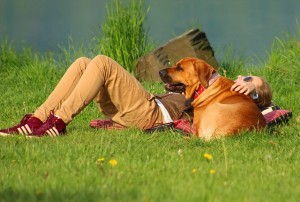7 Ways to Make Dog Walks More Interesting
Apart from providing yourself and your dog the needed exercise for mental and physical soundness, regularly walking your dog also helps your dog to have a feel of his or her environment. However, walks may eventually become boring or even burdensome unless you endeavor to create an occasion out of them and make them more interesting. With a little bit of forethought and planning, you can achieve more from your dog walks. Try these simple tips for a more enjoyable time out with your friend.
- Break the Monotony: For the actual walk, trying out a different route from time to time breaks the monotony of walking the same route every day. Going on a hike or taking a trip to a dog park is also another way you can bring some variety into your walk.
- Plan Occasional Stops: You can plan your dog walks around some other activities as a way of breaking up the walk and alleviating monotony. For instance, you may decide to take a short break during your walk to do some shopping at a dog-friendly store or eat at a dog-friendly restaurant.
- Take In The Sights And Sounds: Take time to let your dog enjoy the surrounding scenes and let him or her sniff if desired as both of you walk along at a leisurely pace.
- Alternate Your Pace And Direction: Switching your speed of walking from time to time helps you to keep your dog close and focused on you and also provides some form of excitement and mental stimulation during walks. You can also try swiftly changing direction by suddenly turning round a corner or making a u-turn.
- Incorporate Some Playtime and Games: you can slip in a little game of “find it” or “hide and seek” during walks to provide more fun and activity for you and your dog. Tossing a Frisbee or a treat in a park is also a great way to engage your dog in some playtime along the way.
- Incorporate Behavior and Leash Training: Dog walks can also be used as an opportunity for leash training and also for training your dog to respond to cues. For this, you need to bring treats along to reinforce positive behavior. If your dog acts out of order during your walk, use the opportunity to correct the behavior and reward positive response.
- Plan To Have Company Or Group Walks: Asking a friend or neighbor to keep you company on your dog walk can make a refreshing difference. If you can, organizing to walk in a group with other dog owners can be a great way to make your dog walks more interesting. Alternatively, you can join a dog walk club if there is one available in your neighborhood.







